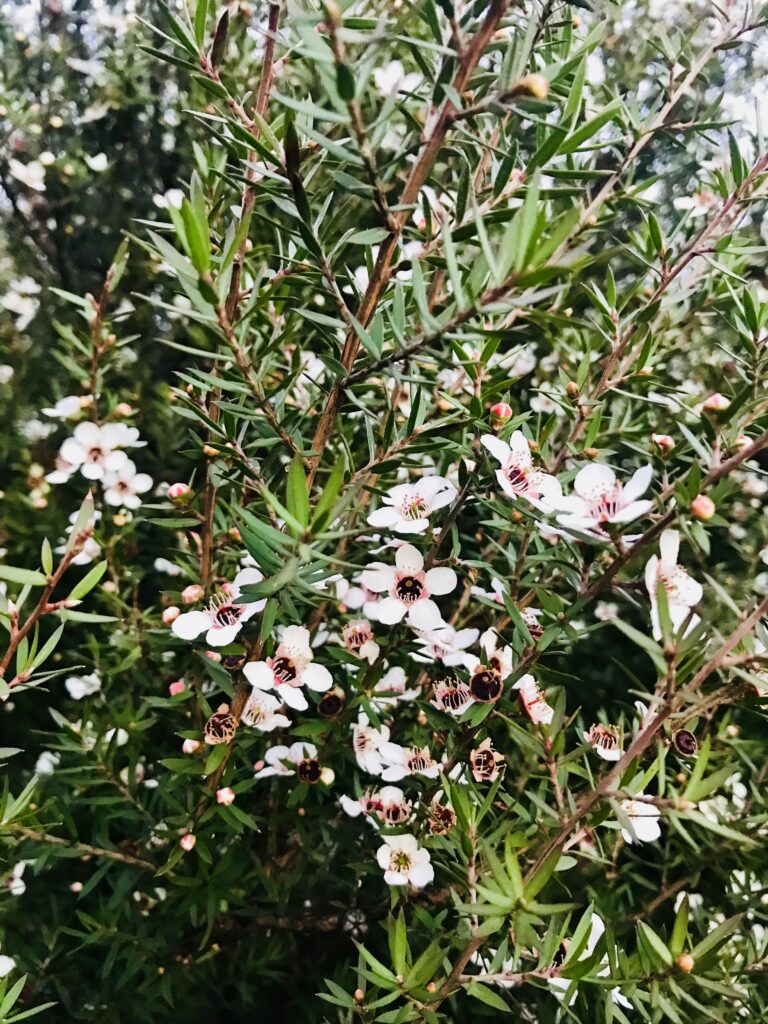Before getting to know what Manuka honey is, let’s first talk about a special plant behind the scene, the Manuka plant (Leptospermum Scoparium)!
Manuka is a perennial scrub plant native to beautiful New Zealand. It is also called “tea-tree”, a name given by Captain Cook who used the leaves of the plant to make tea. Manuka flower is in white and sometimes pink colour, and has a sweet scent. The honeybees of course just love it! Manuka honey, which comes from the nectar of the plant is actually rather precious and rare. One of the reasons is that Manuka plant only blooms for a very limited time each year (normally not exceeding 6 weeks). Some particular flowers might be even only open for a couple of days, which leaves an extremely short window for the hard working honeybees to collect the nectar from the flowers.
Although Manuka plant can survive and thrive in very challenging environment and used to be able to be seen throughout New Zealand, in recent decades Manuka bush have given way to urban and agricultural developments and many of them were pushed into more remote regions in the country. This makes it harder for (not the honeybees this time but) the beekeepers to get access to the beehives located in those Manuka bush areas. Sometimes they even have to use helicopters to move the beehives!
Manuka plant has been historically used by New Zealand Maori people for medicinal purposes. It also contributes the special natural compounds which make Manuka honey distinguished from other types of honey. In the next article, we’ll dig into this precious and wonderfully special New Zealand born honey.
